| Facilities Maintenance
Contextual Project
TOOLS (Use & Safety) |
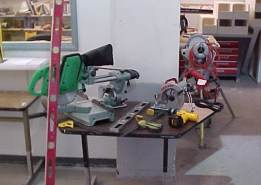 |
| Facilities Maintenance
Contextual Project
TOOLS (Use & Safety) |
 |
|
|
|
|
|
|
|
|
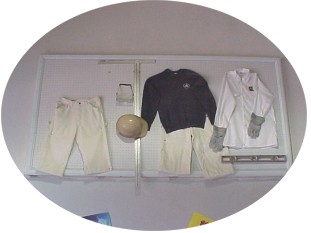 |
The Facilities Maintenance Uniform
|
| Handtools
Included in this collection are: coping, hack and handsaws; hammers, pliers, cutters, tin snips and straight edge. All hand tools are used for small jobs or for working in confined areas. Safety: eye protection should always be worn to prevent
foreign particles from injuring the worker. Lightweight gloves can be worn
to prevent injury to hands.
|
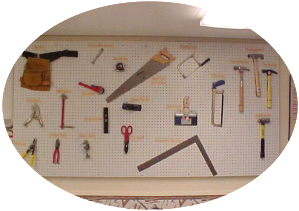 |
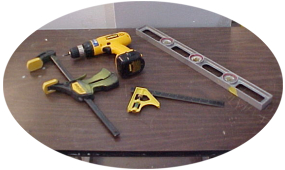 |
Handtools (continued)
A cordless drill can be used to make holes up to 3/4" in diameter or can be used for driving wood or metal screws. A level (right side of picture) is used to make sure a surface is plumb and can range in length from 2' (shown) to 5'. A combination square can be used either to measure or as a level for small surfaces. A quick clamp (far left) is used to secure two work surfaces together, usually while gluing or fastening. Safety: eye protection should always be worn to prevent foreign particles from injuring the worker. Lightweight gloves can be worn to prevent injury to hands. |
| Caulking Gun
Used to apply caulk and adhesives to work surfaces. Safety: eye protection should be worn at all times to prevent injury from accidental exposure to material. |
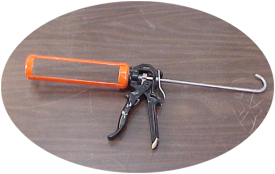 |
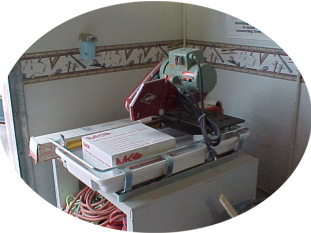 |
Tile Saw
Used to cut ceramic tile in precise manner. Safety: eye protection must be worn at all times.
Forcing the blade may cause the saw to jerk, risking injury to the operator's
hands, face or other exposed body parts. Due to the typically small size
of ceramic tile, extra caution must be taken to prevent injury to hands.
|
| Circular Saw
Used to cut small pieces of wood, the diameter of the blade can vary from 3" to 71/4" depending on the type of saw. Different blades are used for cutting specific type of surfaces. Safety: eye protection must be worn at all times. Keep power cord away from cutting area to prevent electric shock. Pushing the blade may cause the saw to jerk, risking injury to the operator's hands or other exposed body parts. |
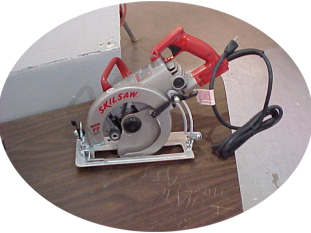 |
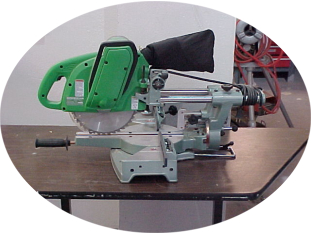 |
Combination Miter Saw
Used to cut wood at specific angles or to cut the edge of wood at varying degrees. Safety: eye protection must be worn at all times. Forcing the blade may cause the saw to jerk, risking injury to the operator's hands, face or other exposed body parts. |
| Table Saw
Used for cutting larger pieces of wood, or for cutting more precisely. Safety: eye and ear protection must be worn at
all times. Forcing the blade may cause the saw to jerk, risking injury
to the operator's hands, face or other exposed body parts. Whenever possible,
the operator should enlist the assistance of another worker to help guide
larger pieces of wood and prevent the blade from binding.
|
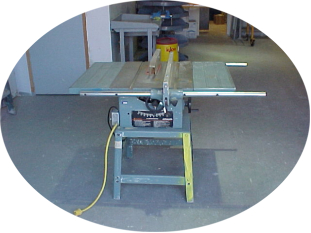 |
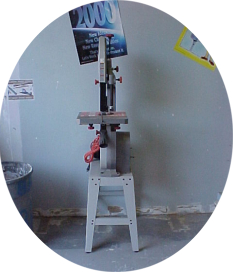 |
Band Saw
Used to make non-linear cuts in wood, such as rounded corners, detailed patterns, or larger holes. Safety: eye and ear protection must be worn at all times. Forcing the blade may cause the saw to jerk, risking injury to the operator's hands, face or other exposed body parts. Due to the typically intricate cuts needed by this tool, extra caution must be taken to prevent injury to hands. |
| Drill Press
Used to drill larger or more precise holes in wood and light metals Safety: eye and ear protection must be worn at
all times. Forcing the drill may cause the drill bit to break, risking
injury to the operator's hands, face or other exposed body parts. Due to
the typically intricate cuts needed by this tool, extra caution must be
taken to prevent injury to hands.
|
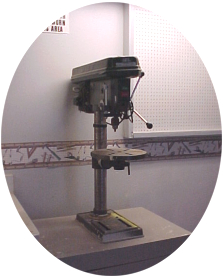 |
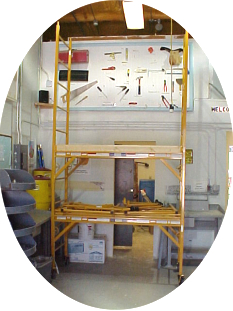 |
Scaffolding
Used to work at jobs that are elevated above floor level. The scaffold provides a more secure foundation than that of ladders; allows the user to cut, drill, hammer or paint with greater efficiency; and allows for easier access to different tools. Safety: failure to lock the wheels, climbing on the sides,
or excessive reaching may cause the scaffold to become unstable or to tip
over completely.
Never attempt to move the scaffold while standing
on the unit. Because the worker is elevated above the floor, failure to
properly use and secure handtools may cause injury to others passing underneath.
Whenever possible, scaffolding should be used with the assistance of another
worker to guide and support the structure.
|

Site Development by B.E.S.T. PRACTICES |